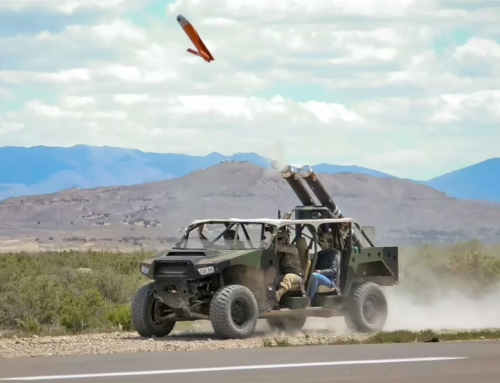At Nvidia’s GTC 2025 conference, unveiling the Blackwell Ultra NVL72 GPU and the GROOT N1 robotics AI model has sent powerful ripples across sectors, none more significant than defence. With computational capabilities set to surpass previous benchmarks and robotics AI redefining human-machine collaboration, these developments signal a pivotal shift in how military forces will train, operate, and engage shortly.
Powering the Next Generation of Synthetic Environments
The Blackwell Ultra NVL72—set to release in late 2025—delivers exponential leaps in AI performance. For defence training systems such as Agincourt’s BattleVR and Archer Firearms Training Platform, this translates to more sophisticated and responsive virtual adversaries, faster simulation rendering, and highly adaptive decision trees. The GPU’s raw processing power will further enhance the ability to generate ultra-realistic training environments with 360° threat vectors, advanced recoil-sensitive weapon systems, and integrated haptic feedback.
These advancements align perfectly with Agincourt’s vision of creating immersive, threat-specific and repeatable training simulations without the logistical constraints of traditional live exercises. With Nvidia’s Blackwell architecture, platforms like BattleVR can introduce real-time environmental changes, simulate low-light and weather complexities with hyper-fidelity, and deliver deeper behavioural analytics during after-action reviews.
GROOT N1: A New Partner on the Virtual Battlefield
Nvidia’s GROOT N1 robotics AI model, designed to facilitate intuitive robotic learning and behaviour replication, heralds a new era in AI-enhanced training. Within Agincourt’s VR training architecture, GROOT’s integration could mean AI-driven virtual opponents and civilians capable of nuanced responses based on trainee actions, mimicking real-world human behaviours under duress or conflict scenarios.
Such advancements could be pivotal in preparing soldiers for dynamic and ethically complex environments. In modules built for judgemental training—such as BattleVR TACTICAL TRAINER—GROOT’s capabilities could introduce branching narratives driven not only by decision outcomes but also by AI that reacts unpredictably within moral, cultural, and tactical parameters.
Mission Control with Hawk: Command-Driven Simulations Meet AI Oversight
The Hawk Command System, Agincourt’s battle oversight platform, stands to benefit significantly from Nvidia’s GPU acceleration. With real-time data visualisation, performance tracking, and scenario manipulation, Hawk gives commanders the tools to direct synthetic environments. Coupling this with GROOT-enabled agents and the ultra-high throughput of Blackwell GPUs could transform this into a brilliant command interface—offering predictive scenario adjustments and autonomous threat modulations based on trainee performance.
A Strategic Alignment: VR, AI, and Defence Readiness
As highlighted in Agincourt’s Tactical Decision-Making with VR whitepaper, immersive VR solutions already provide cost-effective, scalable, and safe environments for enhancing tactical and leadership skills. The convergence of Nvidia’s AI and GPU innovations with Agincourt’s synthetic training ecosystem represents a potent force multiplier—elevating training fidelity and allied forces’ strategic preparedness.
From synthetic marksman drills to complex urban warfare simulations, integrating Blackwell and GROOT can unlock an era in which AI doesn’t just simulate warfighting—it collaborates, evaluates, and evolves alongside those in training.





